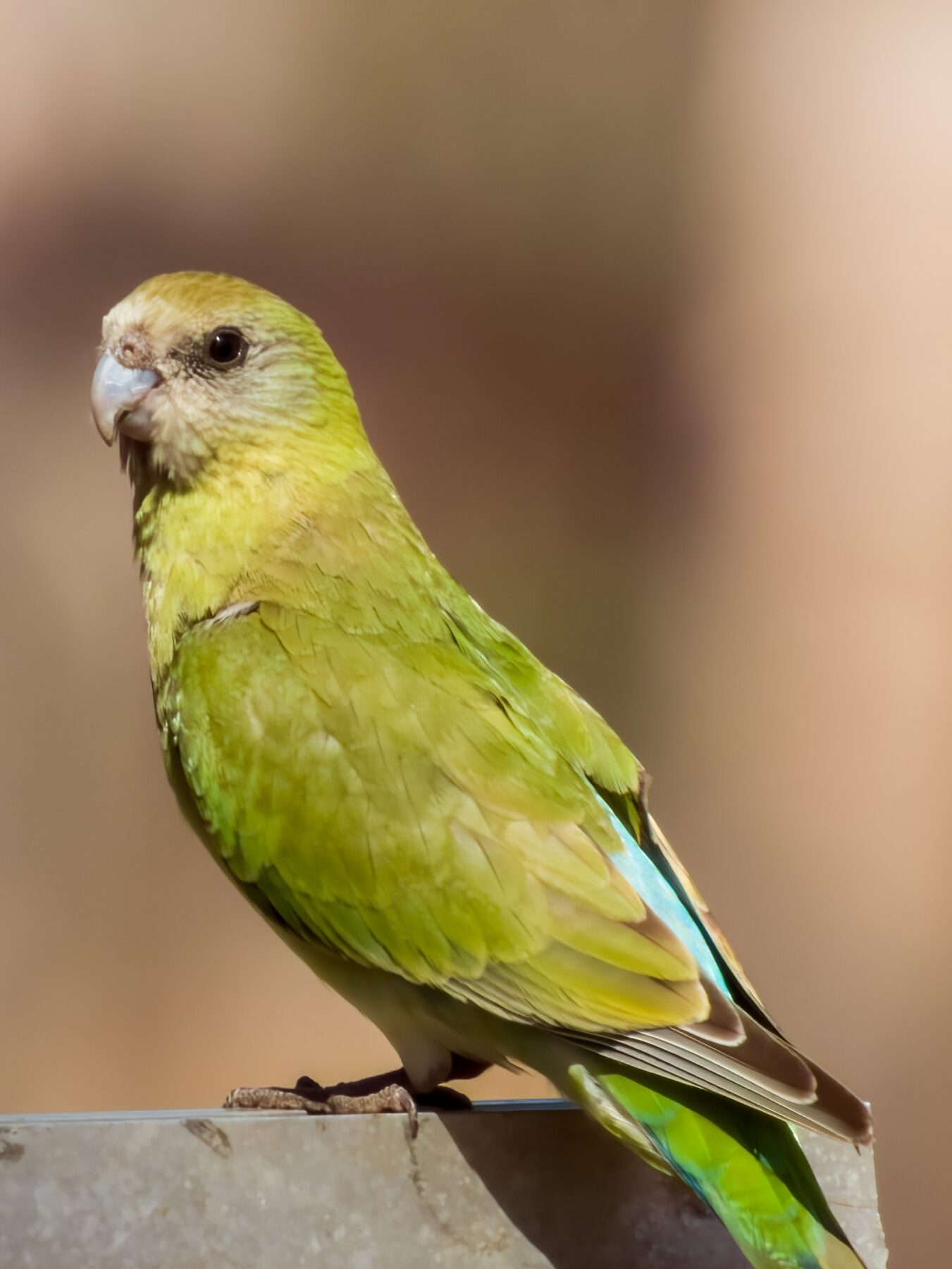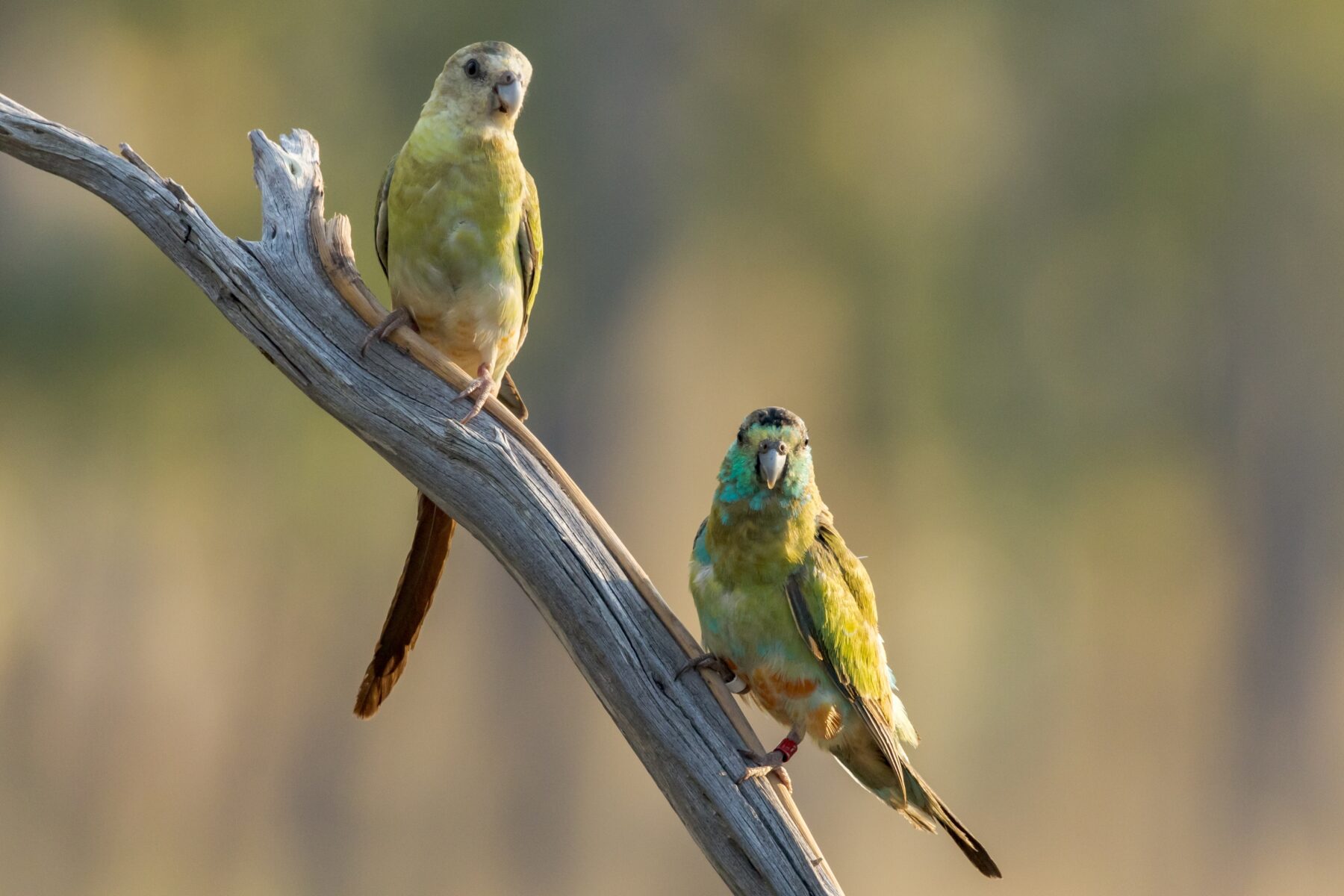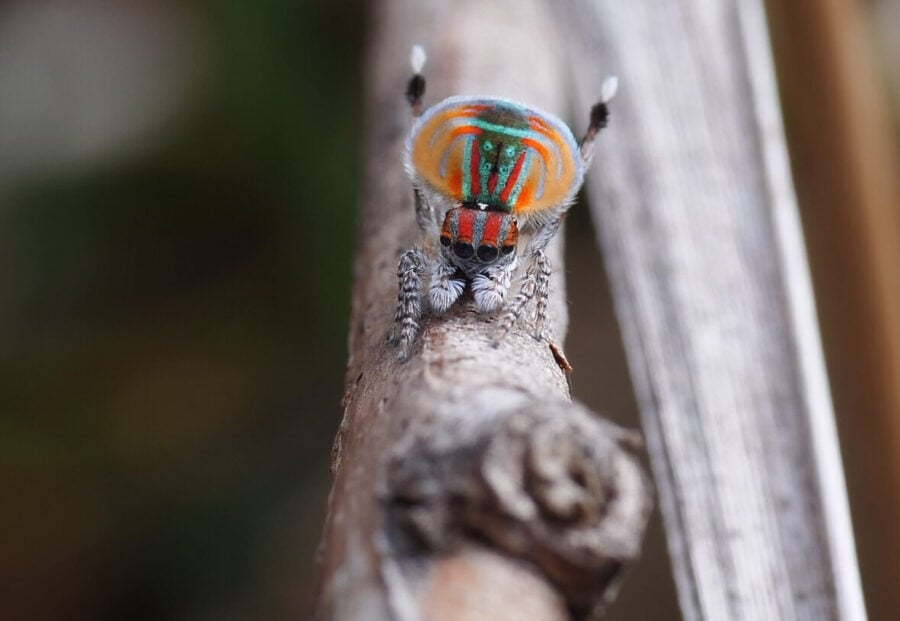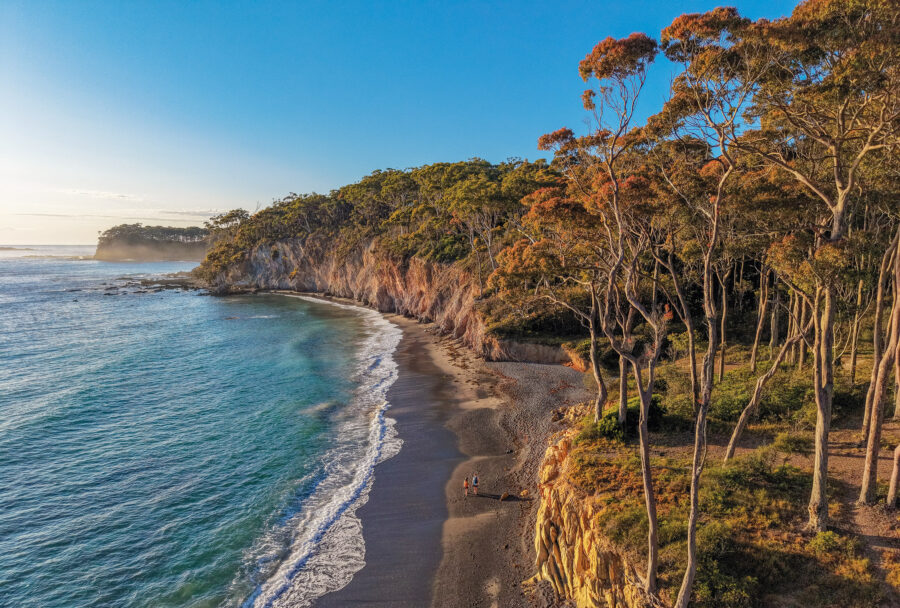| Common name | Golden-shouldered parrot |
| Scientific name | Psephotellus chrysopterygius |
| Type | Aves |
| Diet | Granivorous, primarily eating grass seeds |
| Average lifespan | Not known to science |
| Size | About 23–28 cm long, weighing 54–56g |
CONSERVATION STATUS (Australia): Listed as Endangered under the EPBC Act
The golden-shouldered parrot, also known as the antbed parrot, is a small, colourful species endemic to Queensland’s Cape York Peninsula.
Males have turquoise and orange plumage, a black crown, and a golden-yellow patch on their wings (explaining its ‘golden-shouldered’ name). Females and juveniles are green and turquoise.
Travelling in pairs or small flocks, the golden-shouldered parrot can be found foraging on the ground, feeding on the seeds of native grasses. They roost in trees but nest in termite mounds during the breeding season.
Known as alwal by the Olkola people of north Queensland, the parrot is a sacred totem. It’s closely related to the (now-extinct) paradise parrot and to the Northern Territory’s hooded parrot.


Habitat
The golden-shouldered parrot makes its home in tropical woodland savanna and open grasslands.
Distribution
Once widespread across tropical savanna woodland throughout most of Cape York Peninsula, the golden-shouldered parrot’s range has severely contracted because of land use change.
Conservation status
The golden-shouldered parrot is listed as endangered under the federal EPBC Act.

Reproduction
Breeding occurs from May to July, after the end of the wet season. Breeding pairs excavate a burrow or tunnel into termite mounds, while the mound material is still soft from rain. Females produce a clutch of four to six eggs. Chicks hatch after about 20 days and fledge approximately five weeks later.
Threats
Changed land use has reduced food availability for this grain-eating parrot; altered fire regimes and grazing from cattle and other introduced herbivores have reduced grass seed abundance and biodiversity. The parrot is also impacted by predation from feral cats and the loss of suitable termite-mound nesting sites.
Fascinating fact
There are an estimated 700–1100 golden-shouldered parrots left in the wild.









